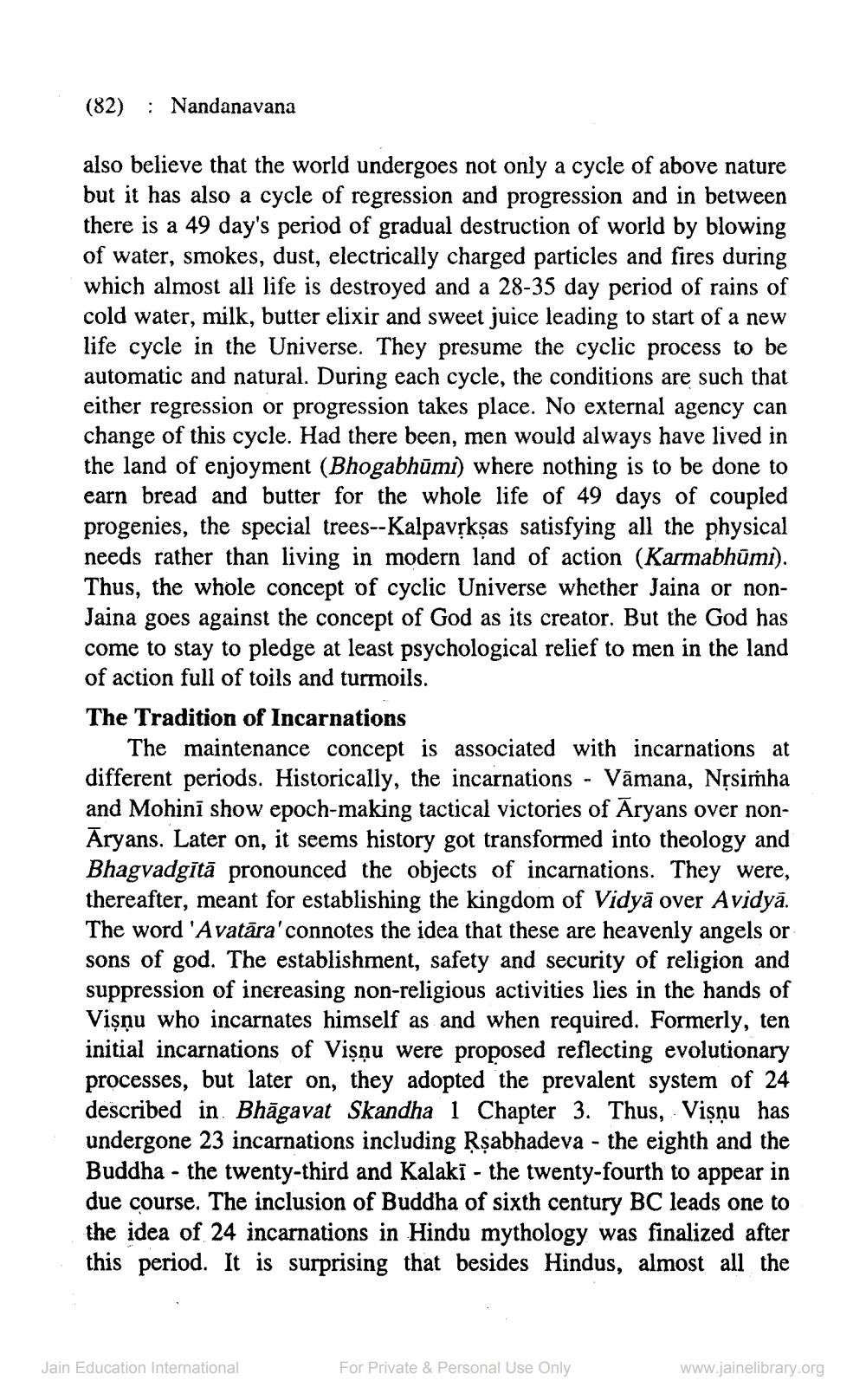________________
(82) : Nandanavana
also believe that the world undergoes not only a cycle of above nature but it has also a cycle of regression and progression and in between there is a 49 day's period of gradual destruction of world by blowing of water, smokes, dust, electrically charged particles and fires during which almost all life is destroyed and a 28-35 day period of rains of cold water, milk, butter elixir and sweet juice leading to start of a new life cycle in the Universe. They presume the cyclic process to be automatic and natural. During each cycle, the conditions are such that either regression or progression takes place. No external agency can change of this cycle. Had there been, men would always have lived in the land of enjoyment (Bhogabhūmi) where nothing is to be done to earn bread and butter for the whole life of 49 days of coupled progenies, the special trees--Kalpavrkņas satisfying all the physical needs rather than living in modern land of action (Karmabhūmi). Thus, the whole concept of cyclic Universe whether Jaina or nonJaina goes against the concept of God as its creator. But the God has come to stay to pledge at least psychological relief to men in the land of action full of toils and turmoils. The Tradition of Incarnations
The maintenance concept is associated with incarnations at different periods. Historically, the incarnations - Vāmana, Nțsimha and Mohinī show epoch-making tactical victories of Āryans over nonĀryans. Later on, it seems history got transformed into theology and Bhagvadgitā pronounced the objects of incarnations. They were, thereafter, meant for establishing the kingdom of Vidyā over Avidyā. The word 'Avatāra'connotes the idea that these are heavenly angels or sons of god. The establishment, safety and security of religion and suppression of increasing non-religious activities lies in the hands of Vişņu who incarnates himself as and when required. Formerly, ten initial incarnations of Vişņu were proposed reflecting evolutionary processes, but later on, they adopted the prevalent system of 24 described in. Bhāgavat Skandha 1 Chapter 3. Thus, Vişņu has undergone 23 incarnations including Rşabhadeva – the eighth and the Buddha - the twenty-third and Kalaki - the twenty-fourth to appear in due course. The inclusion of Buddha of sixth century BC leads one to the idea of 24 incarnations in Hindu mythology was finalized after this period. It is surprising that besides Hindus, almost all the
Jain Education International
For Private & Personal Use Only
www.jainelibrary.org




